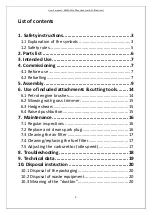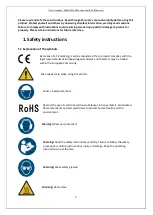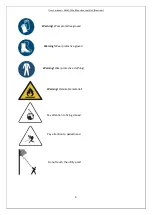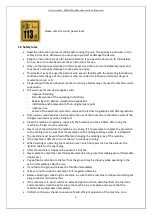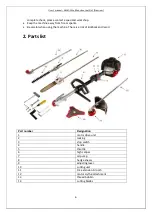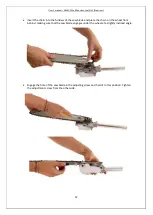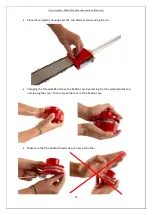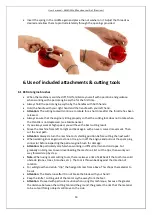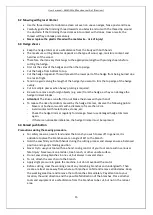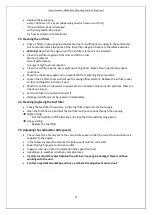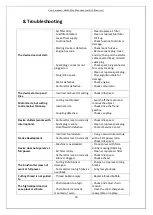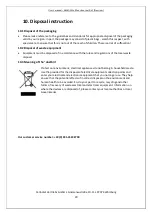
User’s manual –
A
REBO
S Multifunction tool 5in1 (Premium)
8
•
Sometimes overloading will cause misfiring which is normal. If the misfire is audible under
normal load, we recommend replacing the fuel.
•
Do not overfill the tank (see figure max. level).
•
After refuelling, check that the filler cap is properly closed. Avoid spilling gasoline!
•
Use petrol with a maximum ethanol content of 10%.
•
Petrol: octane rating at least 91 RON, lead-free
•
When handling petrol and oil, increased attention should be paid. Smoking and open fire are
not permitted (danger of explosion).
•
Do not fill leaded petrol, diesel or other non-approved fuels.
•
Do not use petrol with an octane number lower than 91 RON. This can lead to serious engine
damage due to increased engine temperatures.
•
If you work continuously at high revs, use gasoline with a higher octane rating.
•
For environmental reasons, the use of unleaded petrol is recommended.
•
Use only two-stroke engine oil for
air-cooled engines
.
•
Caution:
Use only designated and approved containers for transporting and storing fuel. Add
the correct amount of petrol and 2-stroke oil to a mixing bottle. Then shake the container
well.
Never use oil for 4-stroke engines or water-cooled 2-stroke engines
. This can
contaminate the spark plug, block the exhaust air part or glue the piston ring. Also do not use
fuel mixtures that have not been used for a month or longer. This may clog the carburettor
or affect engine operation. Put any remaining fuel in an airtight container and keep it in a
dark, cool room.
•
Caution:
Do not use a 2-stroke oil that recommends a mixing ratio of 100:1.
•
Mix the fuel mixture according to the fuel mixing table.
Mixing process: 40 parts petrol to 1-part oil
- Example: 1 l petrol: 0.025 l 2-stroke oil
5 l of petrol: 0.125 l of 2-stroke oil.
Mixing procedures
40 parts petrol to 1-part oil
Example:
1 liter petrol
0.025 liters 2-stroke oil
5 liters petrol
0,125 liters 2-stroke oil
•
Warning
! Watch out for the exhaust fumes! Always switch off the engine before refueling.
Never pour petrol into the appliance while the engine is running or hot. There is a risk of fire!
Refuel only outdoors or in well-ventilated rooms. Make sure that no fuel or chain oil gets into
the ground (environmental protection). Use a suitable surface.
Filling up with petrol:
•
Attention! Danger of injury! Gasoline is explosive!
•
Refuel the device only outdoors or in adequately ventilated rooms.
•
Clean the area around the filling area. Contamination in the tank will cause malfunctions.
•
Shake the tank with the fuel mixture again before filling it into the tank.
•
Open the fuel filler cap (B) carefully so that any excess pressure can be reduced. (Fig.19)
•
Carefully fill the fuel mixture up to the lower edge of the filler neck.
•
Close the fuel filler cap (B) again. Make sure that the fuel filler cap closes tightly.
•
Clean the fuel filler cap and its surroundings.
•
Check the tank and fuel lines for leaks. Before starting the engine, move at least three metres
away from the fuel station.


